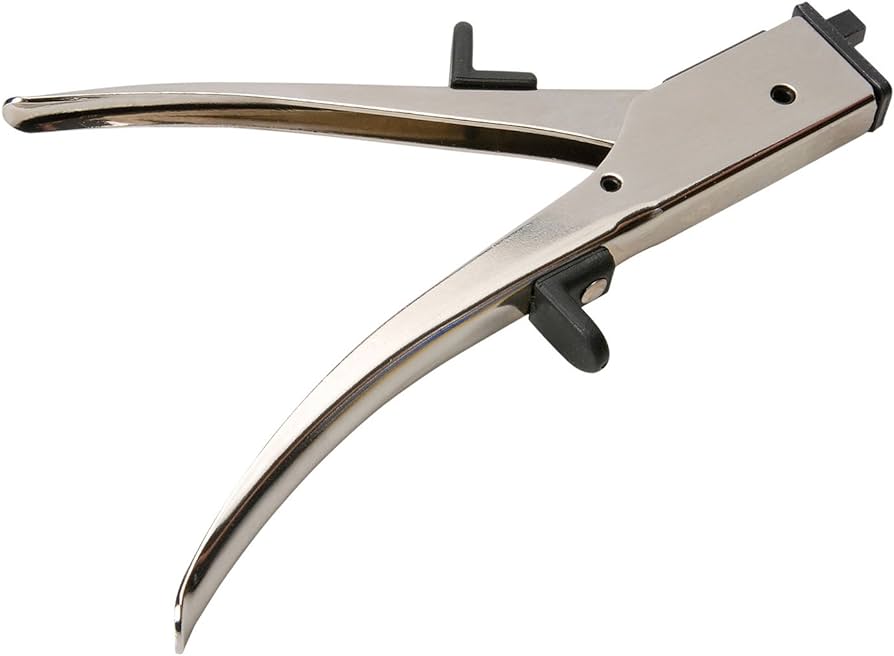Are you tired of using traditional cutting tools that can’t make the precise cuts you need in your DIY projects? Look no further than the nibbling tool, a versatile cutting tool that can make curved and intricate cuts with ease.
In this article, we’ll explore everything you need to know about nibbling tools, including how to choose the right one for your project and tips for using it effectively. So let’s get started!
What is a Nibbling Tool?
A nibbling tool is a handheld cutting tool that is designed to cut through thin sheet metal, plastic, and other materials. It operates by making small, repeated cuts along a straight or curved line until the desired shape is achieved.
Unlike traditional cutting tools like snips or shears, nibbling tools are ideal for making intricate or curved cuts that require precision and control. They are also more efficient at cutting thicker materials than traditional cutting tools.
Types of Nibbling Tools
There are several different types of nibbling tools available on the market today, each with its own unique features and benefits. Here are some of the most common types:
1. Handheld Nibblers – These are the most common type of nibbling tool and are designed to be held in one hand while cutting. They typically have a small cutting head and can make precise cuts in tight spaces.
2. Electric Nibblers – Electric nibblers are similar to handheld nibblers but are powered by electricity instead of being manually operated. This makes them ideal for larger projects that require more consistent cutting power.
3. Bench-Mounted Nibblers – These nibblers are mounted on a workbench or table and are designed to cut through thicker materials than handheld or electric nibblers.
4. Pneumatic Nibblers – Pneumatic nibblers use compressed air to power the cutting action and are ideal for heavy-duty cutting applications.
How to Choose the Right Nibbling Tool
When choosing a nibbling tool, there are several factors you should consider to ensure you get the right tool for your project. Here are some of the most important things to look for:
1. Cutting Capacity – The cutting capacity of a nibbling tool refers to the thickness of material it can cut through. Make sure you choose a tool with a cutting capacity that matches the thickness of the material you’ll be working with.
2. Cutting Speed – The cutting speed of a nibbling tool is how fast it can make cuts in a given amount of time. Look for a tool with a high cutting speed if you need to complete your project quickly.
3. Cutting Head Size – The size of the cutting head on a nibbling tool determines how precise your cuts will be. Choose a tool with a small cutting head if you need to make intricate cuts.
4. Power Source – Consider whether you want a manually operated or electrically powered nibbling tool based on the size and complexity of your project.
Tips for Using Nibbling Tools
Now that you have chosen the right nibbling tool for your project, here are some tips for using it effectively:
1. Use Proper Technique – To get the best results from your nibbling tool, use proper technique by keeping the tool at a 90-degree angle to the material and making small, repeated cuts along your desired line.
2. Lubricate Your Tool – Apply lubrication oil to your nibbling tool before use to reduce friction and prolong its lifespan.
3. Keep Your Work Area Clean – A clean work area will help prevent debris from getting in the way of your cuts, resulting in cleaner, more precise cuts.
4. Use Safety Gear – Always wear safety gear like goggles and gloves when using a nibbling tool to protect yourself from flying debris.
Conclusion
A nibbling tool is a versatile and efficient cutting tool that can make precise cuts in thin materials with ease. By choosing the right tool and using proper technique, you can achieve professional-quality results in your DIY projects.
Whether you’re a hobbyist or a professional, a nibbling tool is an essential addition to your toolkit. So why not try one out for yourself and see the difference it can make in your next project?
References:
– https://en.wikipedia.org/wiki/Nibbler
– https://www.popularmechanics.com/home/tools/how-to/a20592/how-to-use-a-nibbler/
– https://www.doityourself.com/stry/how-to-use-a-nibbler




